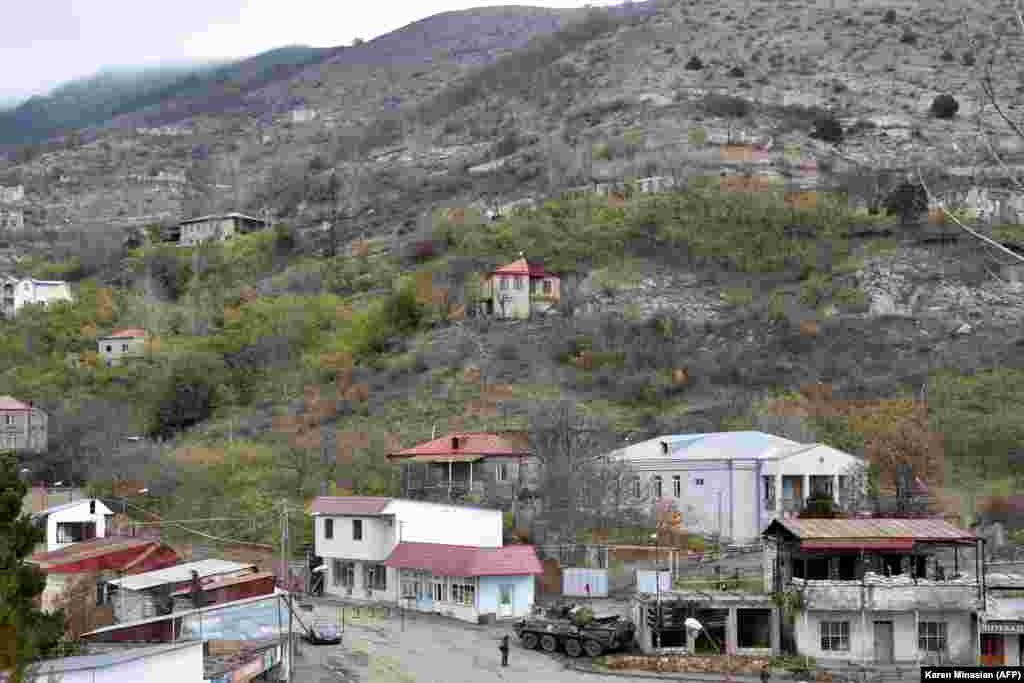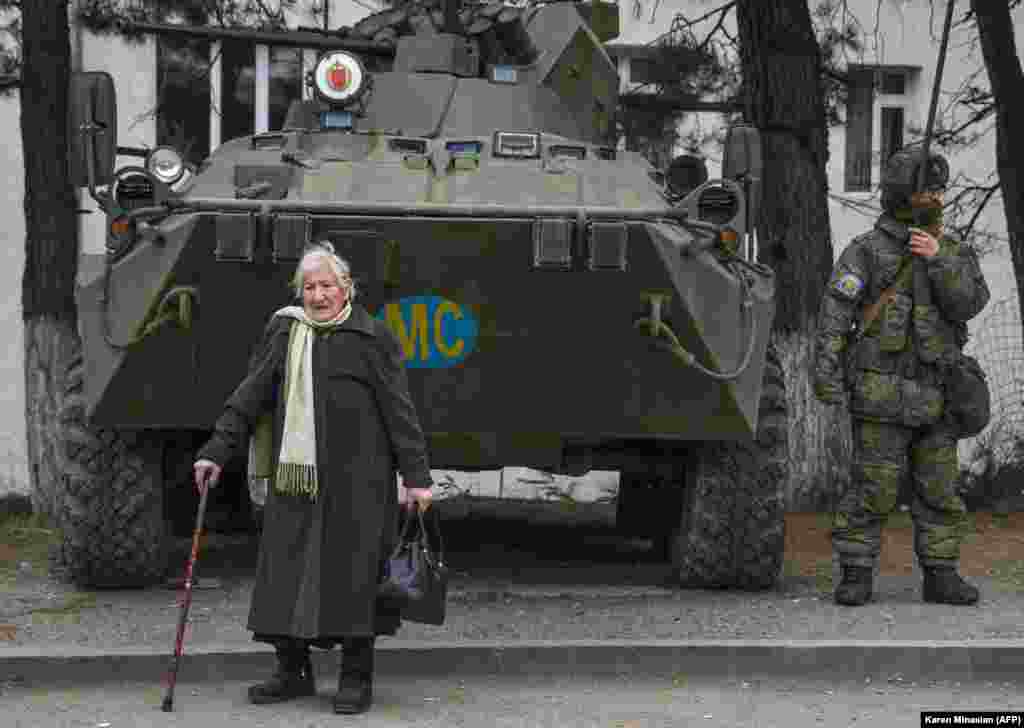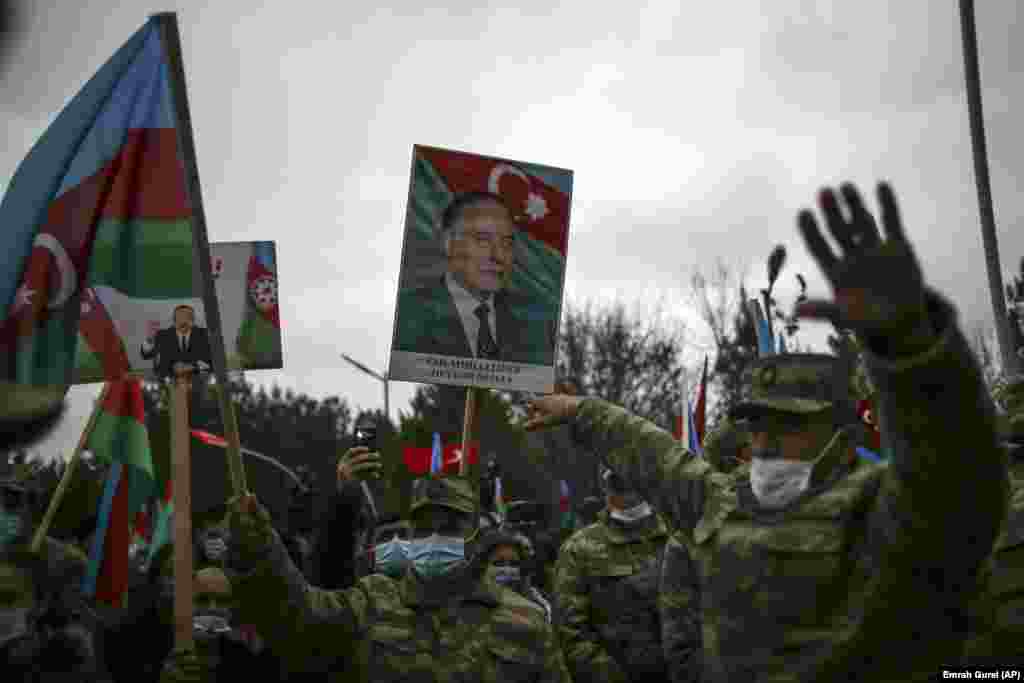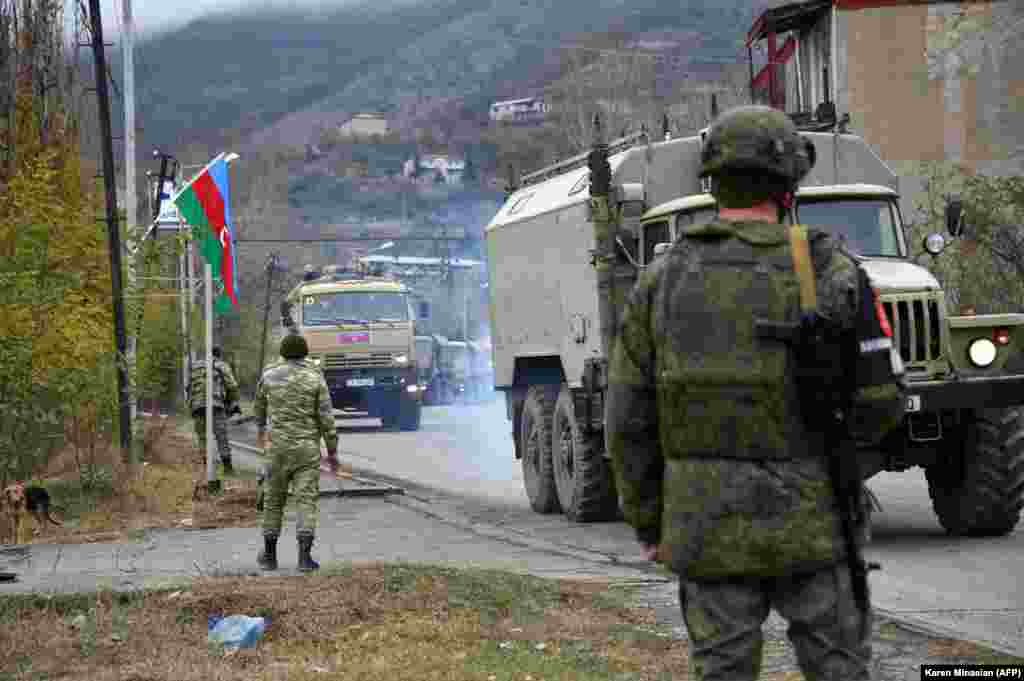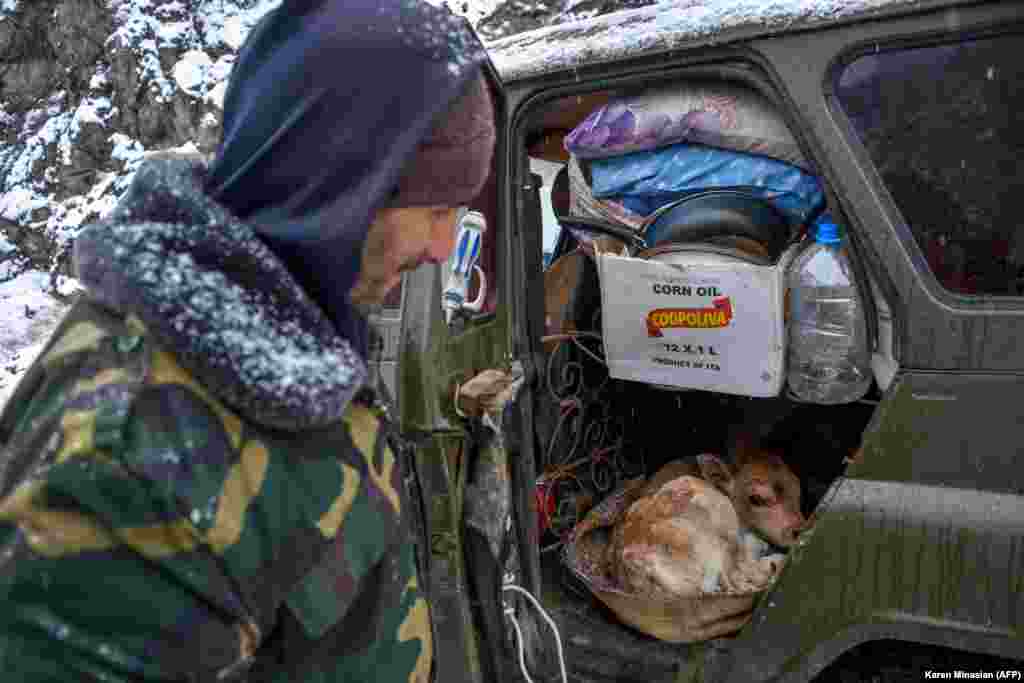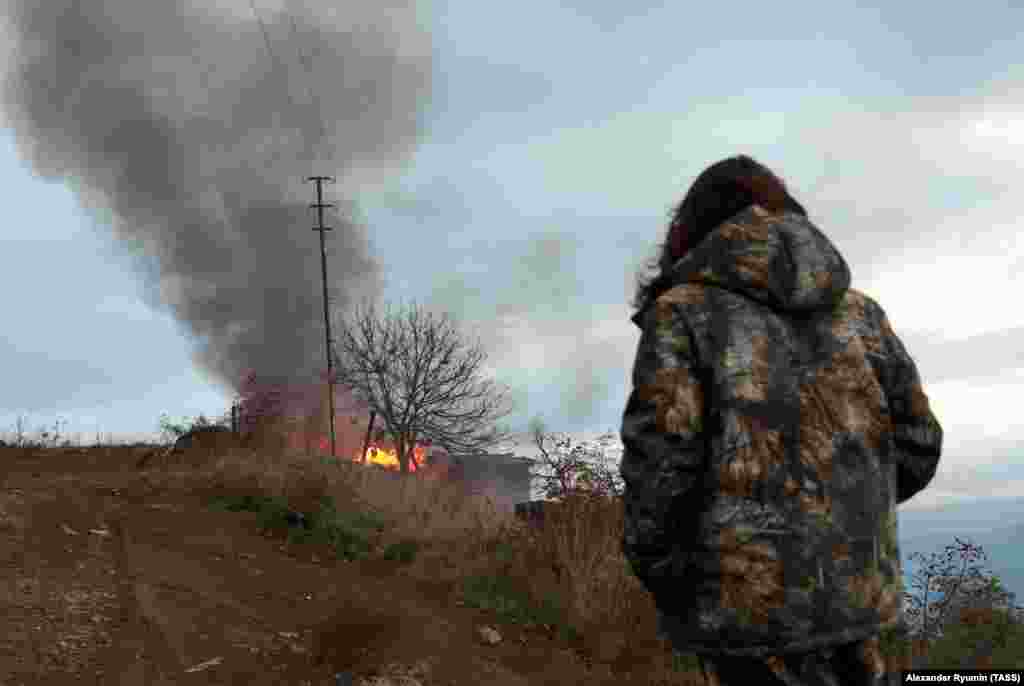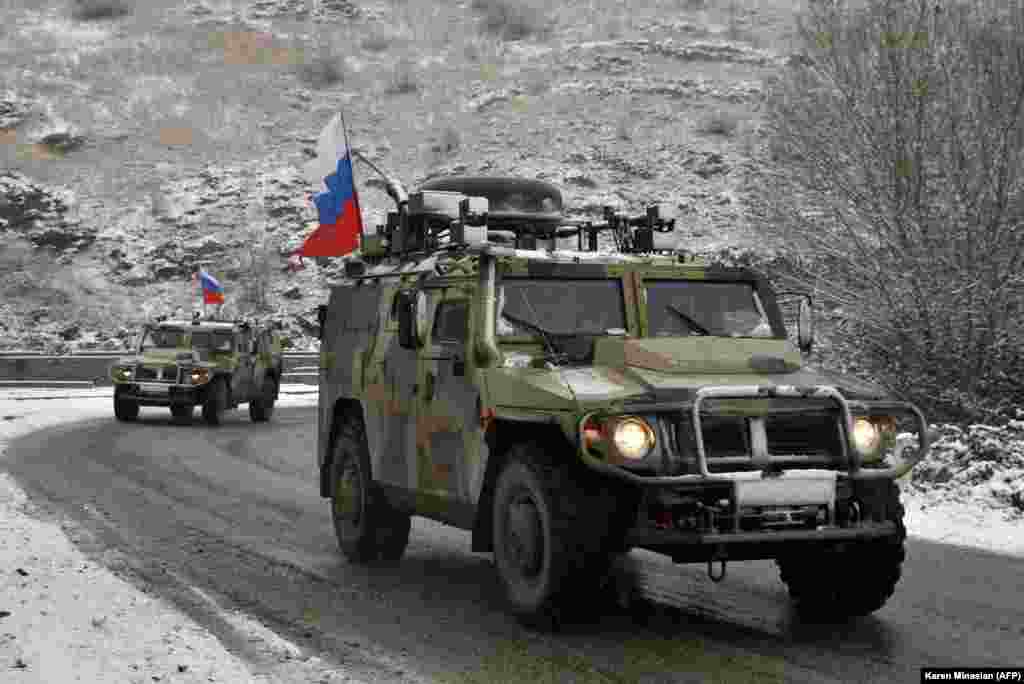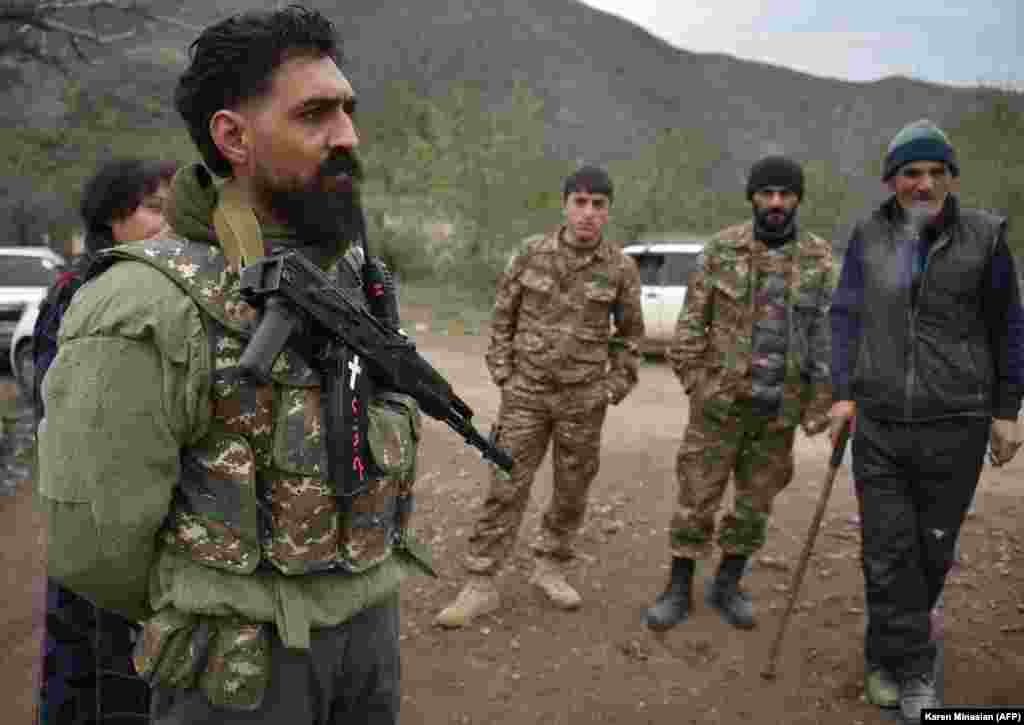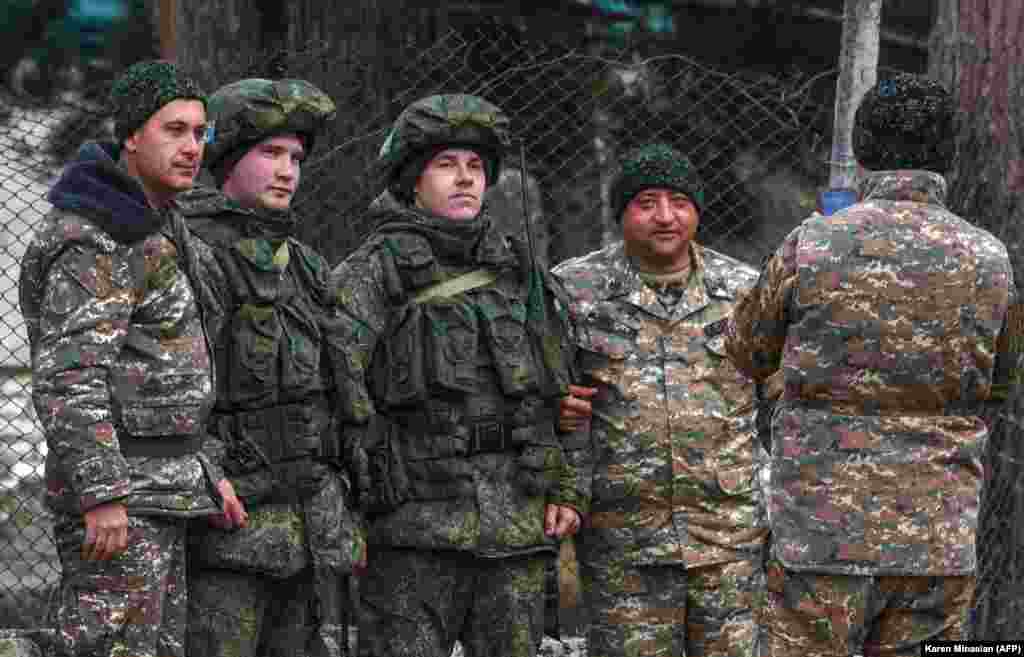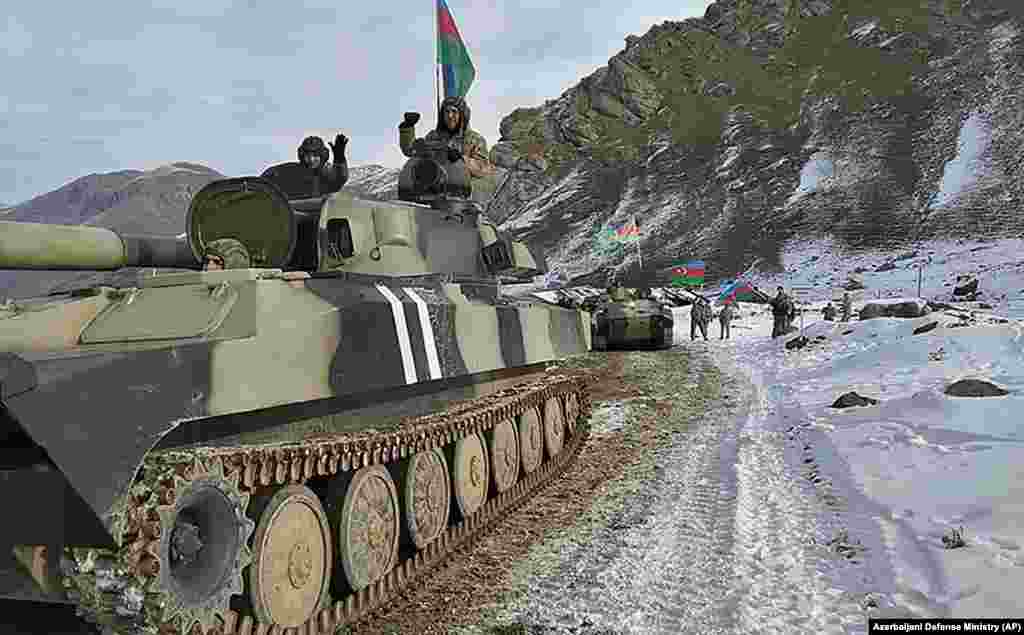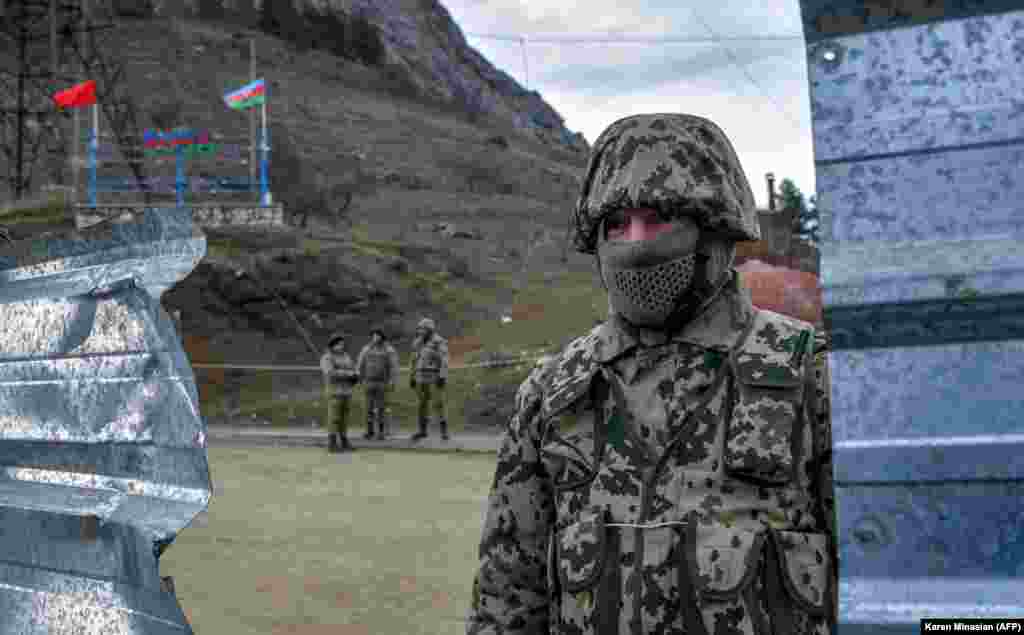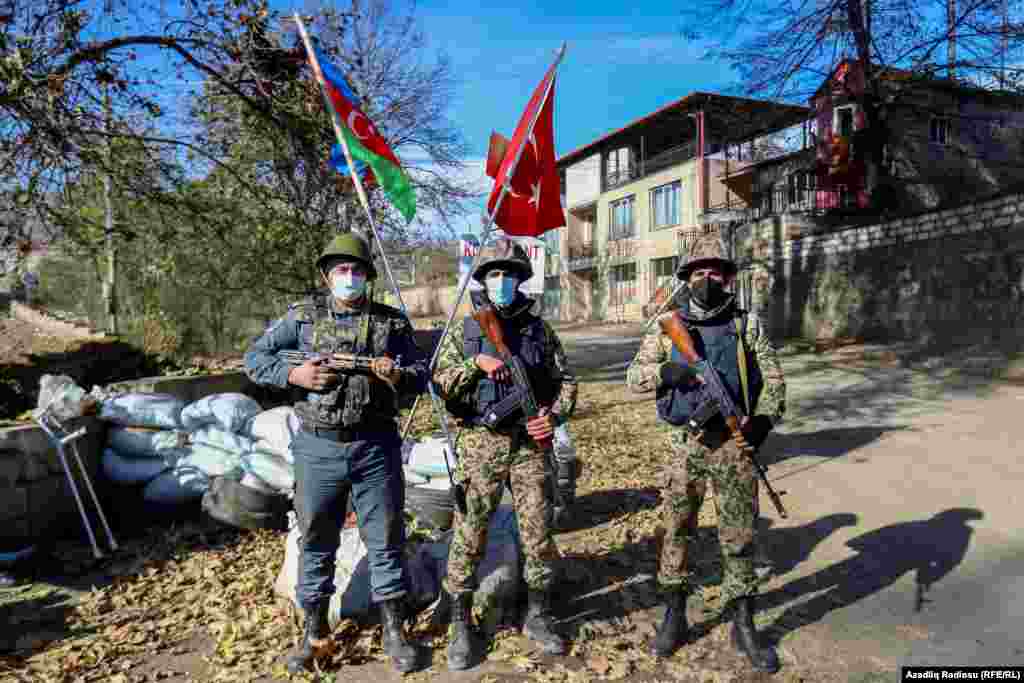As host to the 80-kilometer-long Lachin Corridor connecting Armenia with Nagorno-Karabakh, the Lachin district is all about strategy. Its return to Azerbaijani control on December 1, 2020, the last of three territorial handovers by Armenia under a November 9 truce, ties a knot on Azerbaijan’s territorial gains from the two countries’ recently concluded fighting in the Nagorno-Karabakh conflict zone.
“We all lived with one dream, and now we fulfilled it,” Azerbaijani President Ilham Aliyev said in a televised speech to the nation. Azerbaijan’s “historic victory,” Aliev declared, has led to “a new era” of “development, security, and progress.”
The Lachin district, which borders breakaway Nagorno-Karabakh to the west, is the last of three handovers of ethnic-Armenian-occupied territory to Azerbaijan specified by the November 9 truce signed by Armenia, Azerbaijan, and Russia.
But the future implications of the district’s return to Azerbaijani control after more than 28 years remain unclear.
Russian armed forces doubling as peacekeepers are now stationed along the 5-kilometer-wide Corridor, one of two roads linking the predominantly ethnic Armenian Nagorno-Karabakh to Armenia, in a bid to keep the road open for both civilians and trade.
Under the terms of the truce, the Lachin Corridor will not “affect” the Azerbaijani-controlled Karabakhi town of Shusha (Shushi in Armenian). It currently passes by the town en route to Karabakh’s main town, Khankendi (Stepanakert in Armenian).
The signatories have three years to agree on a plan for a new road, also to be guarded by Russian peacekeepers, that will follow the Corridor’s route. President Aliyev has indicated that the road can be ready in less than three years, but has not elaborated.
Whether via the Corridor or a road running from the Armenian border town of Goris, over 26,000 refugees have traveled back to Karabakh from Armenia since mid-November, the Russian Defense Ministry estimates.
President Aliyev has emphasized that ethnic Armenian returnees to Karabakh will be treated as Azerbaijani citizens, but the details for how – and whether -- this is transpiring in Shusha (Shushi) have not been reported.
As for all of the territory regained by Baku, Aliyev has emphasized that Azerbaijanis displaced from Lachin during the 1992-1994 Nagorno-Karabakh war intend to return home. Some ethnic Armenians now living in Lachin, however, have told international media they intend to stay. No plan has been released for how these two groups could co-exist peacefully.
For now, as with the earlier returned districts of Agdam and Kalbacar, Baku’s emphasis appears to be on celebration.
“We are back, #Lachin, you’re no longer under military occupation!” the Azerbaijani Foreign Ministry tweeted on December 1.
Meanwhile, within Armenia, the finger-pointing continues. Protesters demanding the resignation of Armenian Prime Minister Nikol Pashinian again blocked streets in downtown Yerevan on December 1.
-With additional reporting from AP, TASS
“We all lived with one dream, and now we fulfilled it,” Azerbaijani President Ilham Aliyev said in a televised speech to the nation. Azerbaijan’s “historic victory,” Aliev declared, has led to “a new era” of “development, security, and progress.”
The Lachin district, which borders breakaway Nagorno-Karabakh to the west, is the last of three handovers of ethnic-Armenian-occupied territory to Azerbaijan specified by the November 9 truce signed by Armenia, Azerbaijan, and Russia.
But the future implications of the district’s return to Azerbaijani control after more than 28 years remain unclear.
Russian armed forces doubling as peacekeepers are now stationed along the 5-kilometer-wide Corridor, one of two roads linking the predominantly ethnic Armenian Nagorno-Karabakh to Armenia, in a bid to keep the road open for both civilians and trade.
Under the terms of the truce, the Lachin Corridor will not “affect” the Azerbaijani-controlled Karabakhi town of Shusha (Shushi in Armenian). It currently passes by the town en route to Karabakh’s main town, Khankendi (Stepanakert in Armenian).
The signatories have three years to agree on a plan for a new road, also to be guarded by Russian peacekeepers, that will follow the Corridor’s route. President Aliyev has indicated that the road can be ready in less than three years, but has not elaborated.
Whether via the Corridor or a road running from the Armenian border town of Goris, over 26,000 refugees have traveled back to Karabakh from Armenia since mid-November, the Russian Defense Ministry estimates.
President Aliyev has emphasized that ethnic Armenian returnees to Karabakh will be treated as Azerbaijani citizens, but the details for how – and whether -- this is transpiring in Shusha (Shushi) have not been reported.
As for all of the territory regained by Baku, Aliyev has emphasized that Azerbaijanis displaced from Lachin during the 1992-1994 Nagorno-Karabakh war intend to return home. Some ethnic Armenians now living in Lachin, however, have told international media they intend to stay. No plan has been released for how these two groups could co-exist peacefully.
For now, as with the earlier returned districts of Agdam and Kalbacar, Baku’s emphasis appears to be on celebration.
“We are back, #Lachin, you’re no longer under military occupation!” the Azerbaijani Foreign Ministry tweeted on December 1.
Meanwhile, within Armenia, the finger-pointing continues. Protesters demanding the resignation of Armenian Prime Minister Nikol Pashinian again blocked streets in downtown Yerevan on December 1.
-With additional reporting from AP, TASS




